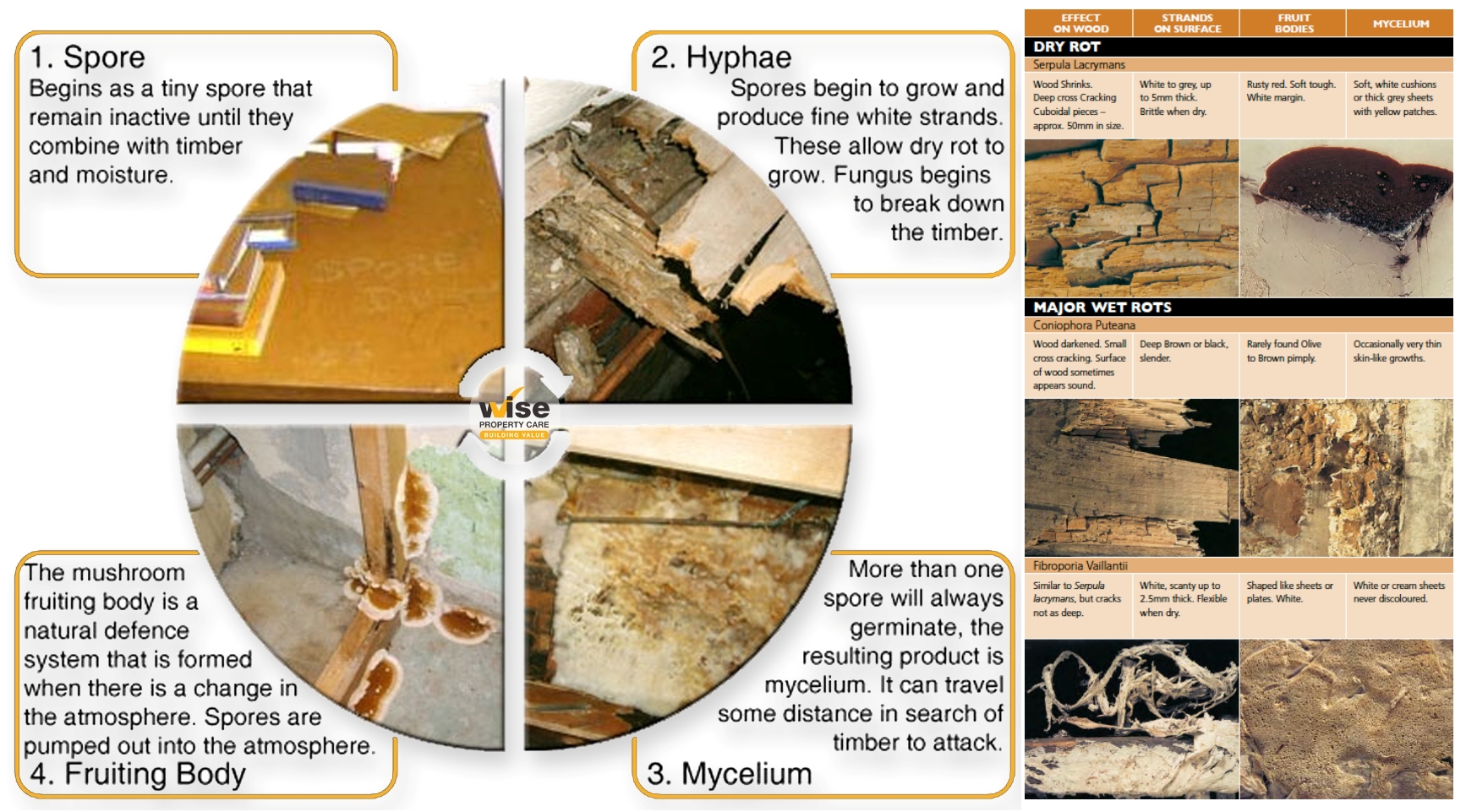
“Dry Rot” is a little bit of an oxymoron because it’s usually caused by the accumulation of moisture where it isn’t supposed to be. This can be caused by a number of different issues, but usually it’s because the waterproofing at the outside of the structure has let water into the interior portions of the wood structure. This moisture carries microbes with it that can then turn into mold; that mold in turn eats away at the wood.
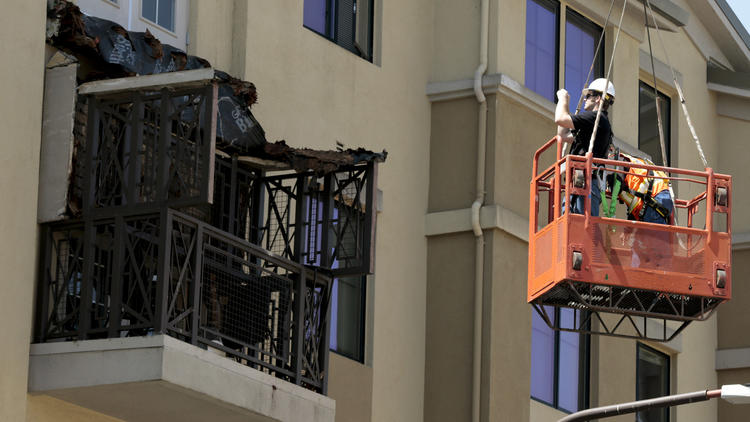
(This is what you don’t want to happen…)
In June, 2017 dry rot made an appearance in the news (photo above) when the wood beams of a balcony in Berkley, California had deteriorated so thoroughly in the eight years since the apartment was built, that the balcony failed structurally. This terrible accident killed six people and left several others injured. Sadly, structural collapse due to rot is not all that uncommon. In fact, in 2015 there was also a fatality in Folsom, California when a fifteen year old staircase collapsed, killing a 26 year old man.
We’ve come across rot in renovations and strategic demolitions hundreds of times, and it absolutely must be replaced. But, there are a number of visual and other clues that you can use to prevent yourself from a hazardous fate at the hands of rot. Read on for some tips on how to spot it before it gets dangerous.
- You can see wooden fascia, trim, or siding that’s rotted.
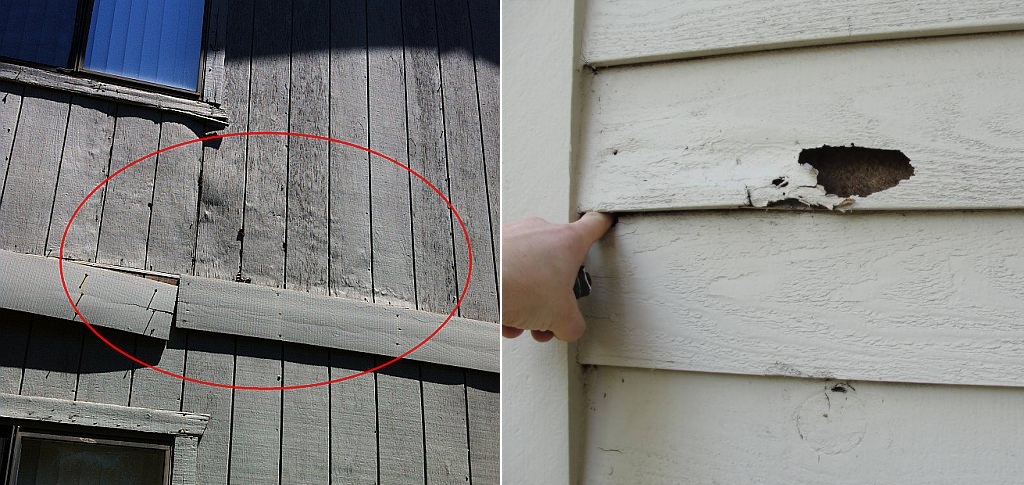
Unfortunately, if you start to see signs of rot like the ones in these photos at the outside of your structure; it’s highly likely that you’ll also find rot on whatever studs, beams, and other wood members are on the inside of your structure behind these issues. This can compromise the stability of your structure, and if you see signs of rot like these, we suggest that you call a professional (like us) right away.
- You see wood that looks or feels “spongy.”
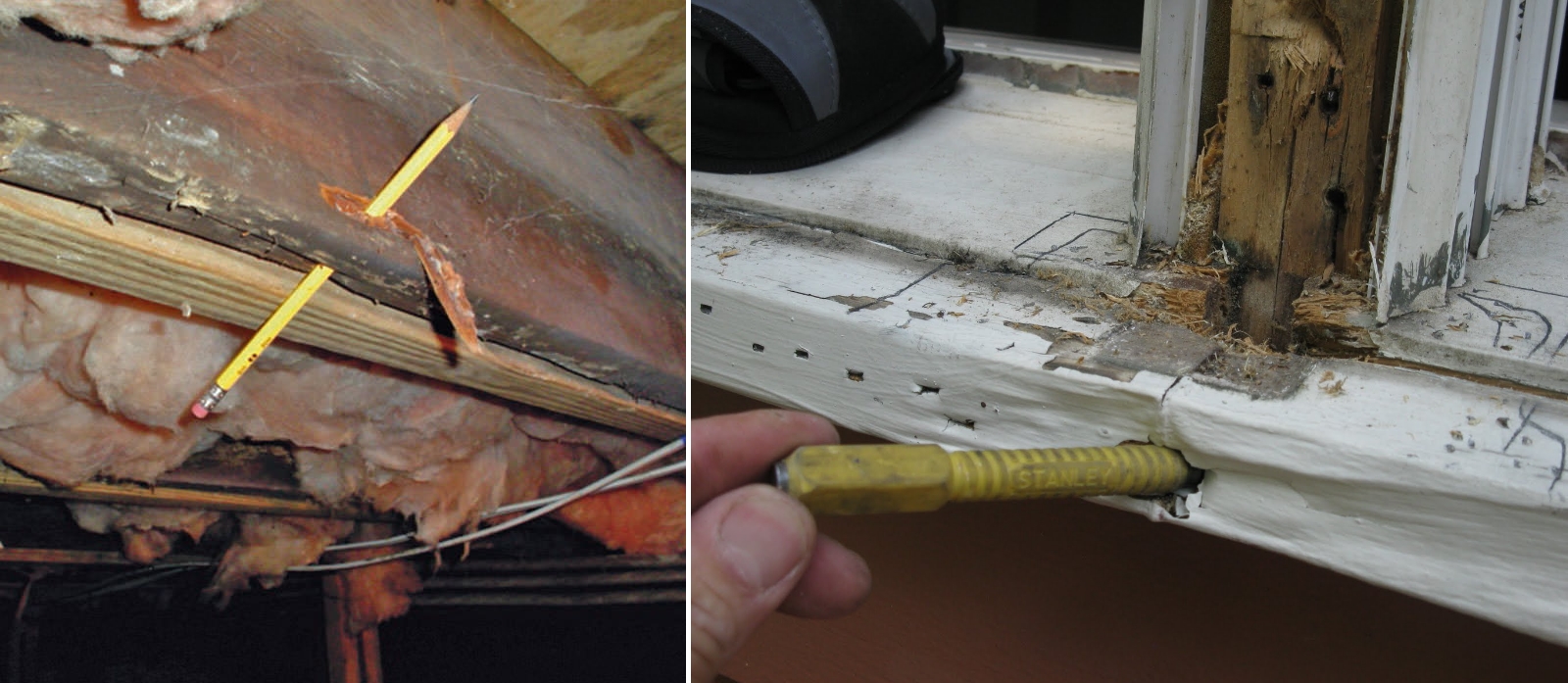
Wood does have some give, naturally. But if you can push any instrument through a piece of wood that you see on or in your structure – it’s rotten and needs to be replaced. The same goes for anything you might feel with your feet. If you’re walking down a set of stairs or on a roof and it feels like it’s sinking noticeably underfoot, we again suggest that you call a professional right away; because something under there is rotten.
- You can see the structure leaning and/or see pronounced cracking in stucco, drywall, or plaster.
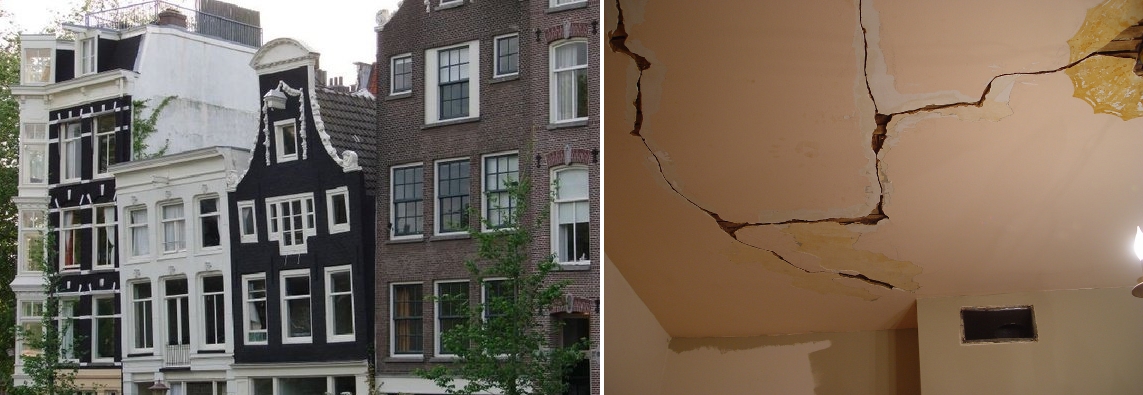
As a beam or joist that’s supporting a load begins to rot, the structure will begin to shift in that direction. This can cause large, pronounced cracks in your drywall, stucco, or plaster and/or cause a wood structure to lean visibly.
So, if you see or feel any of these signs of dry rot in your home or commercial structures – be sure to Contact Us before it gets worse.